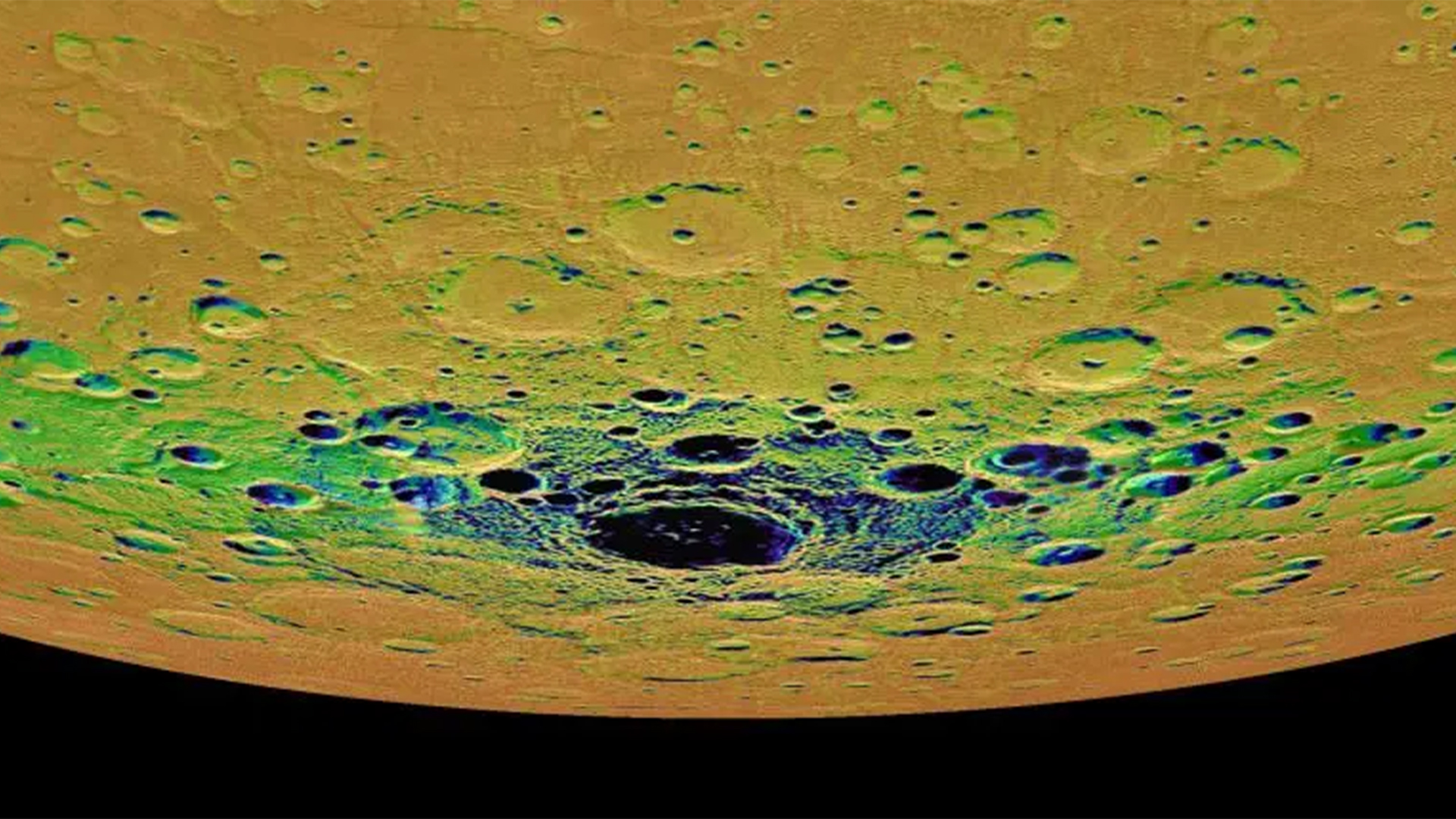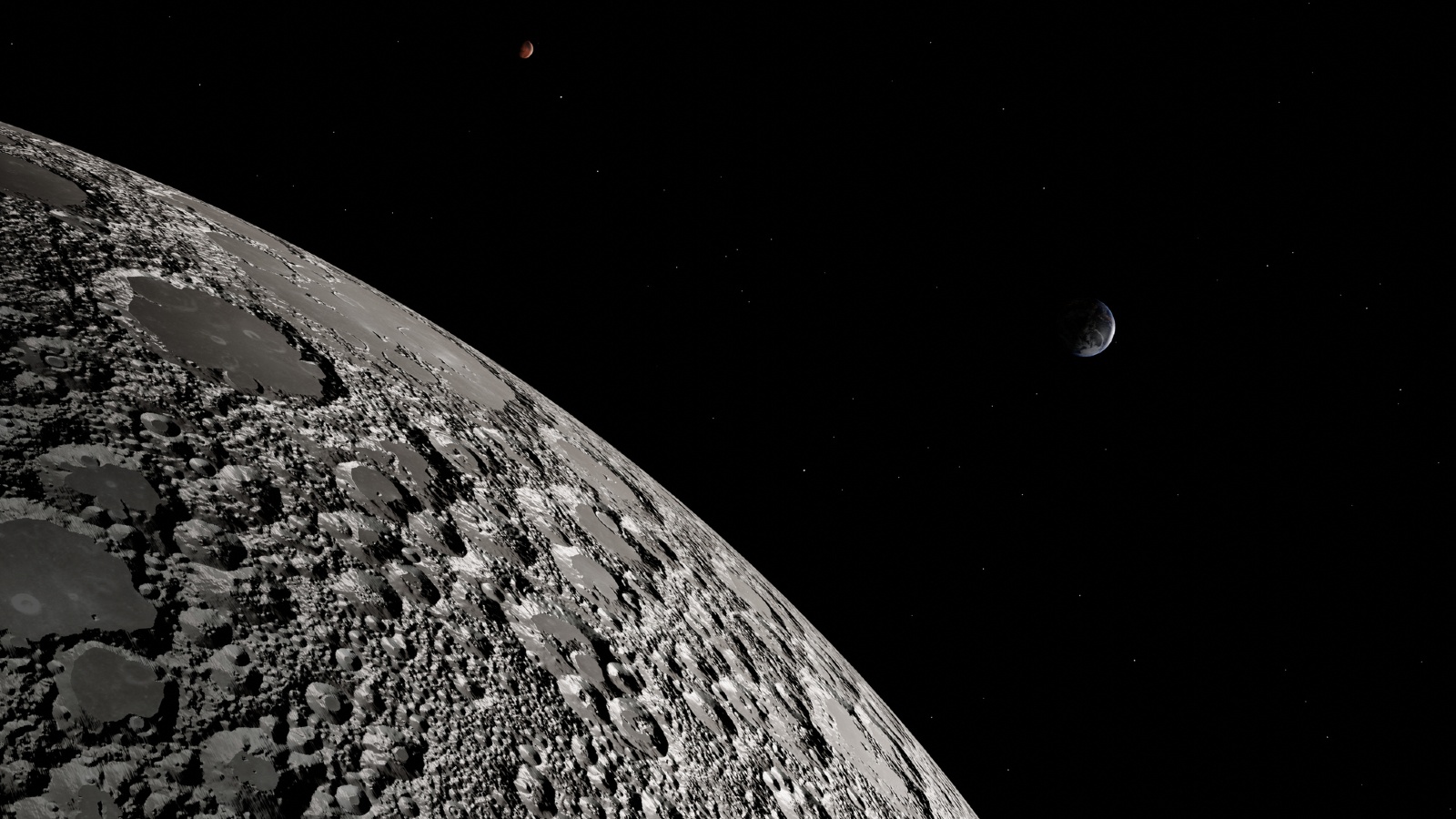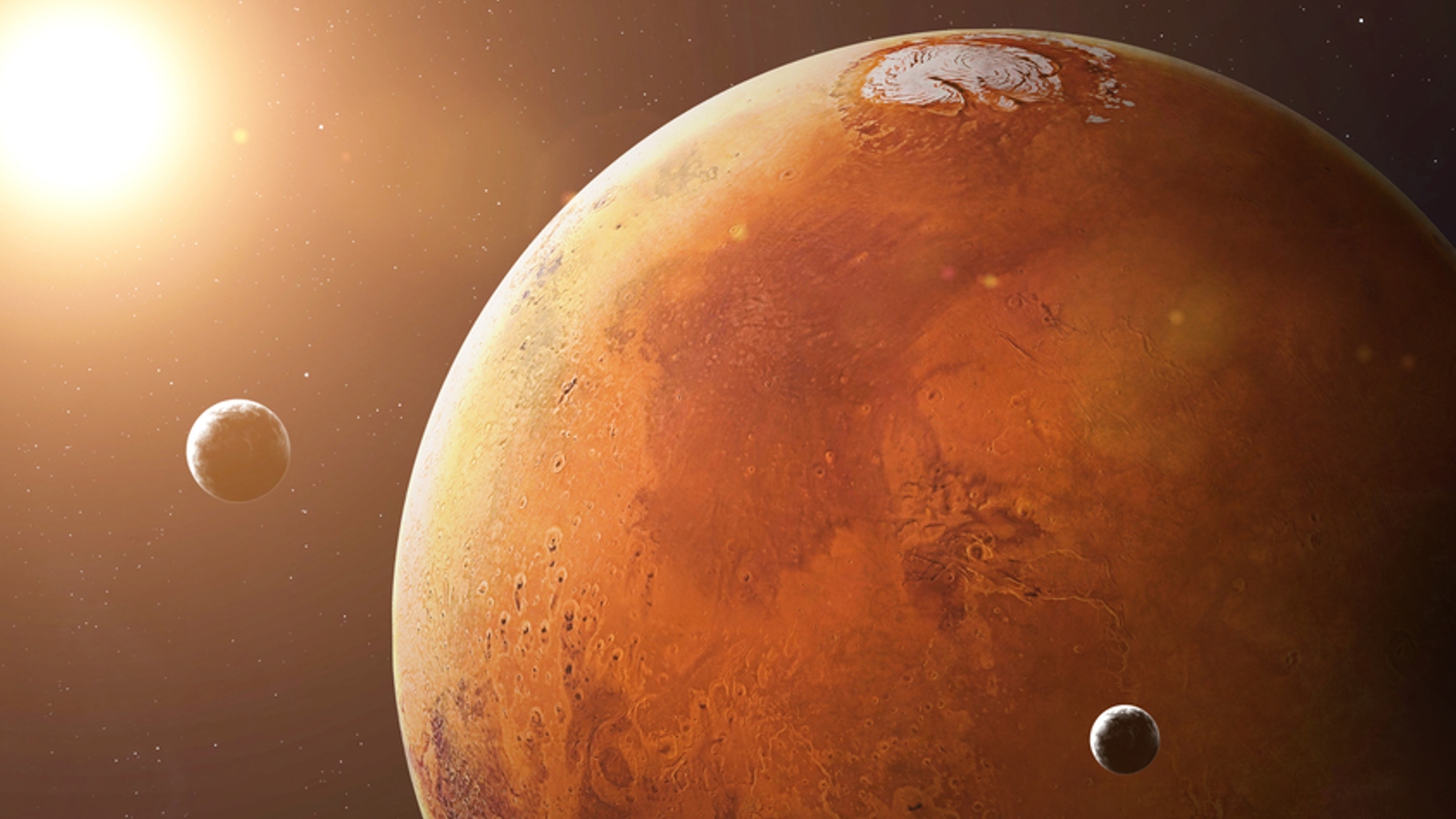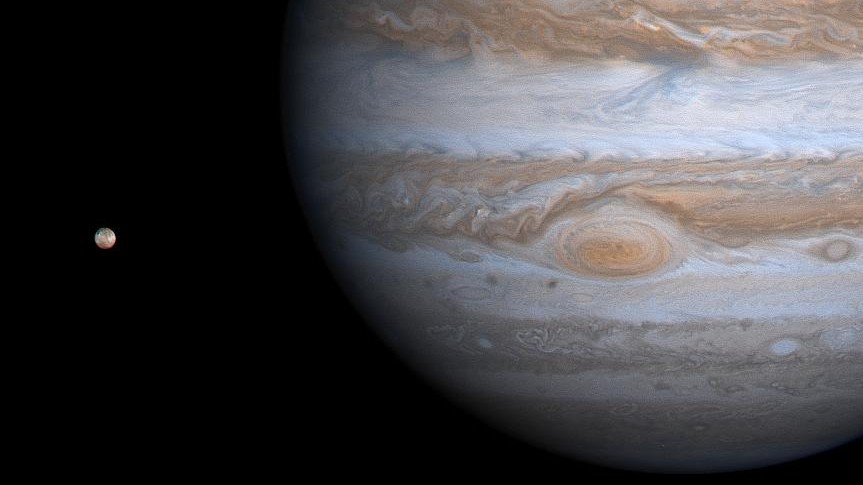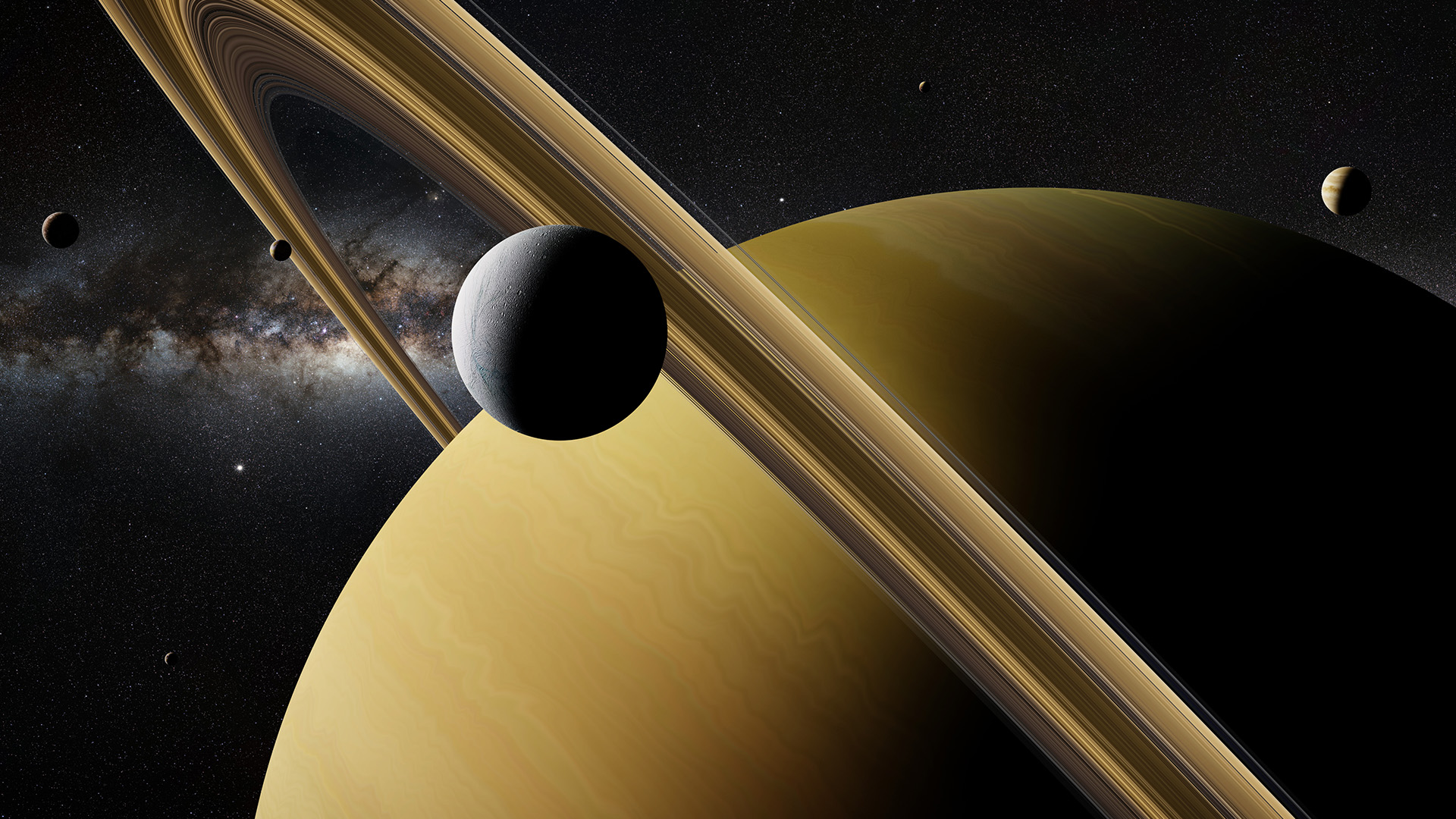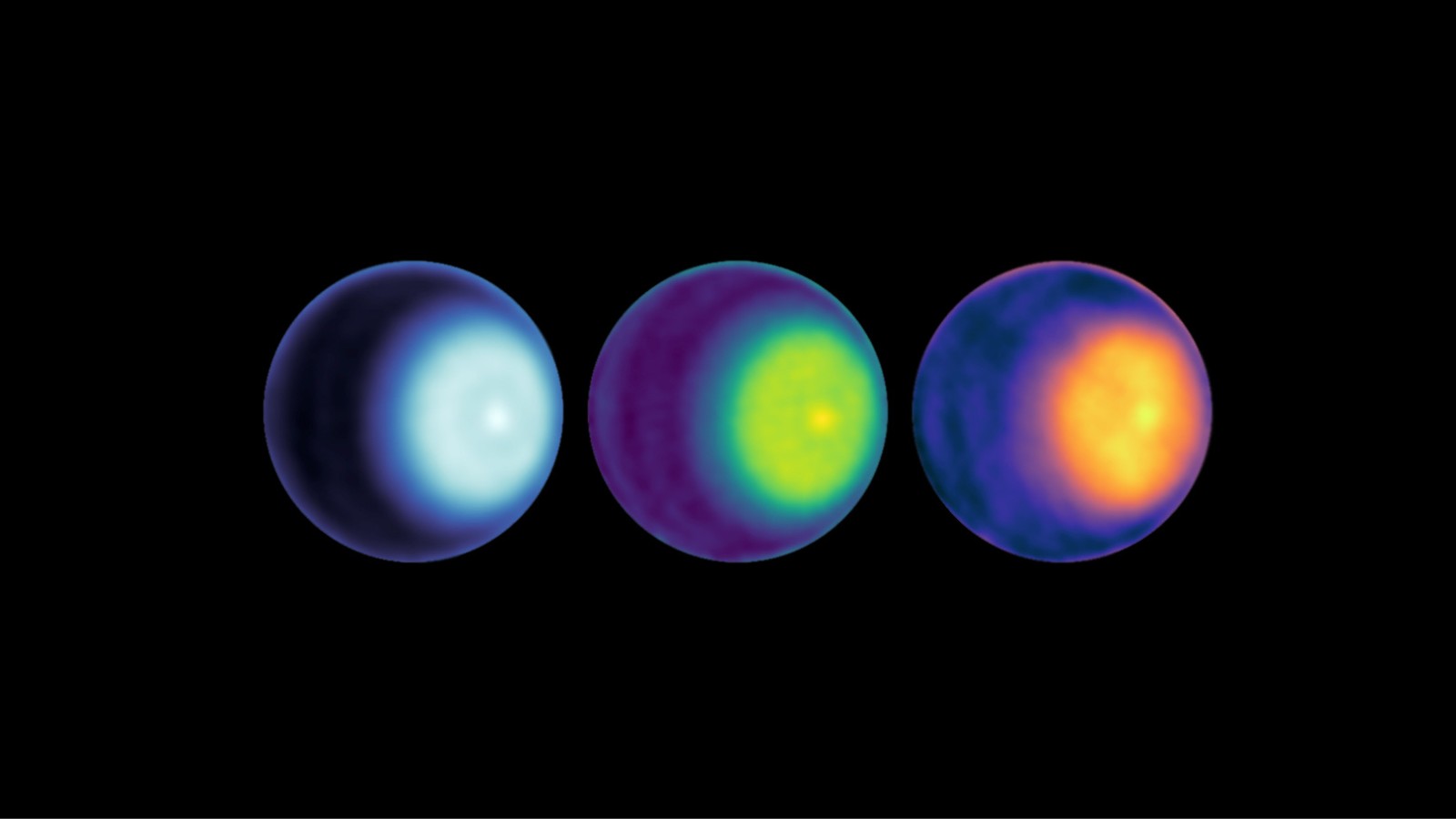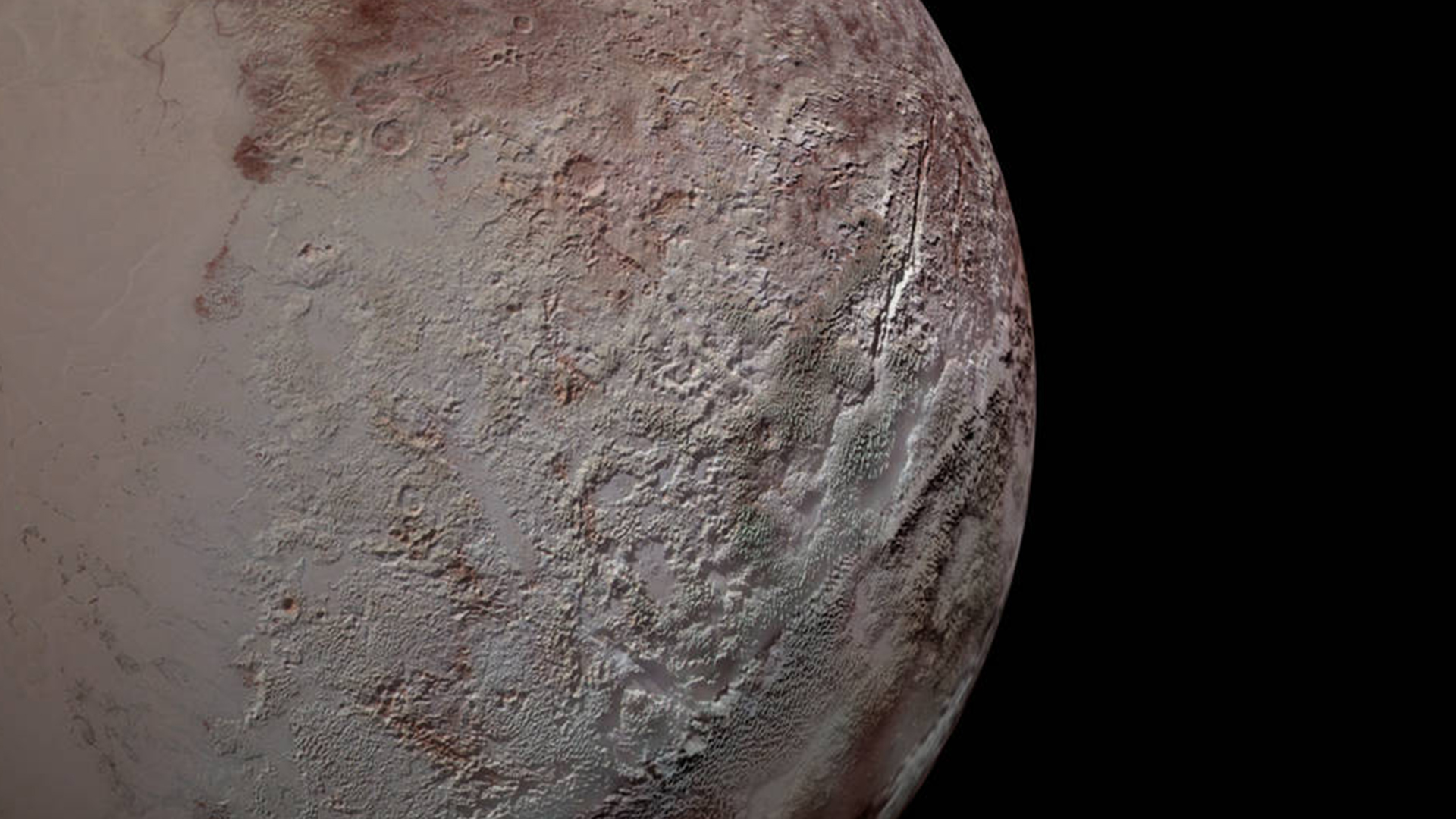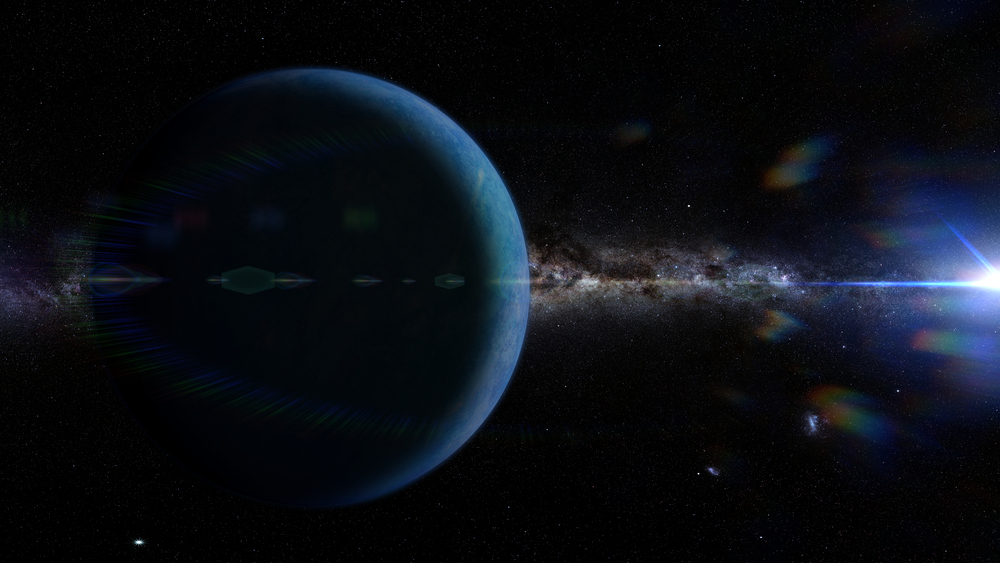10 out-of-this-world solar system discoveries made in 2023
From Mercury to Pluto (and maybe even Planet Nine), here are some of 2023's most intriguing discoveries about the planets, moons and other bodies in our solar system.

Every year, we learn more about the intricacies of the solar system, and 2023 has been no different. This year, scientists shed more light on our cosmic neighborhood with some intriguing discoveries. From shrinking planets and new moons to an icy supervolcano and mysterious spots, here are the 10 wildest things we learned about the solar system in 2023.
Mercury is shrinking
Starting with the planet closest to the sun, Mercury, an October study revealed that the solar system's tiniest planet might be getting even smaller.
Experts have long known that Mercury has shrunk significantly since it first formed. Giant cracks, known as scarps, on the planet's surface were created as the planet contracted over long periods of cooling.
Scientists originally thought these scarps were billions of years old, but the new research showed that some were just 300 million years old, which suggests the planet has been shrinking for most of its life — and it could still be happening today.
This year, scientists also discovered that salty glaciers in some of Mercury's craters could provide the necessary conditions for some extreme life-forms to thrive.
Oxygen found on Venus
Moving farther from the sun, researchers announced in November that oxygen had been detected in Venus' atmosphere for the second time, confirming that the element is present on the hellish planet.
The thin layer of molecular oxygen (unbonded oxygen atoms) was spotted by NASA's Stratospheric Observatory for Infrared Astronomy, a telescope attached to a large plane that flew above most forms of interference in Earth's atmosphere between 2014 and 2022.
Get the world’s most fascinating discoveries delivered straight to your inbox.
However, this oxygen is not a sign of life on Venus. Instead, researchers suspect the gas is created as solar radiation breaks down carbon dioxide and carbon monoxide molecules in the atmosphere. This oxygen would also be useless to future human colonists because it is not breathable and is found in low concentrations.
This year, scientists also discovered that Venus has thousands more volcanoes than we previously realized and that a majority of them could still be active.
The moon is older than we thought
Closer to home, a study published in October revealed that the moon may be at least 40 million years older than we previously thought.
Researchers examined tiny impact crystals, known as zircon crystals, within lunar rock samples brought back by NASA's Apollo 17 mission. The new analysis revealed that these crystals,which were left by a colossal collision between Earth and a Mars-size planet that birthed the moon, were older than similar crystals found in other lunar samples.
"These crystals are the oldest known solids that formed after the giant impact," the researchers wrote, and they act as "an anchor for lunar chronology."
This year, astronomers also detected a mysterious heat-emitting blob on the moon's far side and spotted a separate chunk of the moon orbiting Earth.
Mars is spinning faster and faster
One of the biggest stories to come from Mars this year is that the Red Planet's spin has been getting quicker every year, and scientists don't know why.
Data from NASA's InSight mission shows that Mars' rotation is accelerating at a rate of 4 milliarcseconds per year, which means its days are growing slightly shorter. (A milliarcsecond is one one-thousandth of an arcsecond, which is a unit of angularity.)
Two leading theories explain the speed-up. The first is that ice accumulation at the planet's poles is causing a slight change in how its mass is distributed, and the second is a phenomenon called postglacial rebound, where landmasses rise up after millennia buried under ice.
This year, scientists also solved the mystery of the planet's largest-ever "marsquake" and calculated the minimum number of people needed to start a Martian colony.
Jupiter has a dozen new moons
This year, scientists confirmed the existence of 12 new moons around Jupiter, bringing the planet's satellite count to 92. At the time, this set a new solar system record.
The newly discovered Jovian moons are small, ranging from 0.6 to 2 miles (1 to 3.2 kilometers) wide, and most of them have wide orbits — nine of the 12 moons take more than 550 days to orbit Jupiter.
The moons were discovered in 2021 and 2022 but were just confirmed this year by the International Astronomical Union's Minor Planet Center.
This year, NASA's Juno spacecraft also discovered organic compounds on the surface of Jupiter's largest moon, Ganymede. The molecules likely came from the moon's subsurface ocean, hinting that it could sustain life.
But Saturn has even more moons
If you thought Jupiter gained lots of moons this year, just wait until you get a load of Saturn's new satellites. This year, scientists officially added 62 moons to the ringed planet's roster, bringing its total to 145 and setting a new record that is unlikely to be broken by Jupiter again.
Some of the new moons were just 1.6 miles (2.5 km) wide. But all of the newly detected satellites are "irregular moons," meaning they follow distant, elliptical orbits around their host planet and often move in retrograde, meaning in the opposite direction of Saturn's rotation. Some are also clumped together, suggesting they were once a single body that broke apart.
This year, scientists also spotted a key organic compound shooting out of Saturn's icy ocean moon Enceladus, and researchers also worked out that the astronomer who discovered Saturn's largest moon, Titan, was probably nearsighted.
Polar vortex spotted on Uranus
Moving into the outer planets, new images of Uranus showed a gigantic "polar vortex" swirling around the ice giant's north pole, suggesting the planet's atmosphere is not as inert as we previously believed.
A polar vortex is a swirling ring of hot or cold air that circles a planet's polar region. These vortices have been spotted on Venus, Earth, Mars, Jupiter, Saturn and Neptune. And in 1986, NASA's Voyager 2 probe spotted a polar vortex around Uranus' south pole on its journey out of the solar system.
The swirling rings are thought to be caused by high-altitude atmospheric jet streams, although the mechanisms differ from planet to planet.
Earlier this year, scientists also spotted a polar vortex on the sun for the first time.
Neptune keeps growing mysterious spots
This year, astronomers captured the first, clear image of one of Neptune's mysterious dark spots from Earth and photographed a never-before-seen bright spot at the same time.
Temporary dark spots have been documented on the solar system's most distant planet since 1989, when Voyager 2 spotted one as it passed by. Scientists think the dark spots are probably gigantic storms, like Jupiter's "Great Red Spot," but they are unsure why the spots appear so dark.
The recent bright spot has never been seen before and lasted only a few weeks, so its origins are even more mysterious. But the different spots are likely linked, researchers said.
This year, astronomers also noticed that all of Neptune's clouds had suddenly vanished. The disappearing act is likely linked to a peak in solar activity as the sun reaches the explosive peak in its roughly 11-year solar cycle, known as the solar maximum.
Pluto has an icy supervolcano
Demoted planet Pluto has been hiding a gigantic cryovolcano the size of Yellowstone's supervolcano, an October study revealed.
Cryovolcanoes, also known as ice volcanoes, are simply volcanoes that erupt with cryomagma — ice, water and various gases — instead of molten rock. They've been found in several places across the solar system, including the dwarf planet Ceres and at the heart of explosive comets, such as the "devil comet."
Pluto's newly discovered volcano, named Kiladze Caldera, was originally pegged as a crater in images captured by NASA's New Horizons mission. But after taking a second look at the data, scientists detected traces of cryomagama around the depression, which is evidence that it has erupted multiple times.
Scientists don't know if it's still active, but if it is, it could produce enough cryomagma to cover Los Angeles.
Planet Nine might not exist (but it also might)
Planet Nine is a hypothetical planet that is rumored to exist somewhere in the outer reaches of the solar system.
The Planet Nine hypothesis arose when astronomers detected gravitational anomalies in the Kuiper Belt — a group of comets and asteroids beyond the orbit of Neptune. These anomalies suggest that an invisible planet up to 10 times the size of Earth is lurking beyond the Kuiper Belt.
But in a preprint paper uploaded in September, scientists proposed that these gravitational anomalies could be explained by an alternative theory of gravity, known as modified Newtonian dynamics (MOND).
MOND suggests that entities toward the edge of the Milky Way, such as the solar system, experience a greater gravitational tug from our galaxy's supermassive black hole heart than traditional gravity allows. Therefore, the Kuiper Belt object may be tugged away by our galaxy and not an elusive planet. However, MOND is not a universally accepted theory, so for now, our best guess is that Planet Nine does exist.

Harry is a U.K.-based senior staff writer at Live Science. He studied marine biology at the University of Exeter before training to become a journalist. He covers a wide range of topics including space exploration, planetary science, space weather, climate change, animal behavior and paleontology. His recent work on the solar maximum won "best space submission" at the 2024 Aerospace Media Awards and was shortlisted in the "top scoop" category at the NCTJ Awards for Excellence in 2023. He also writes Live Science's weekly Earth from space series.


